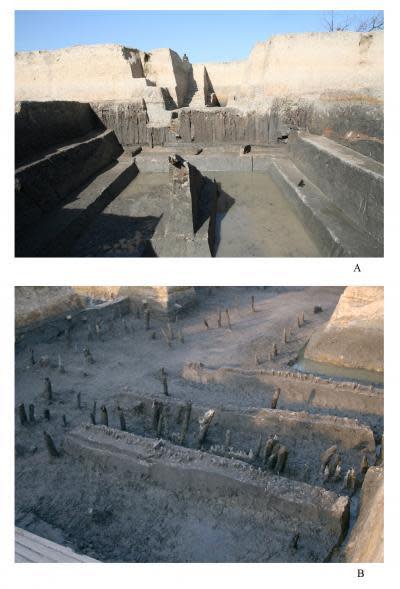Culture is like religion.When you ask me if Catholic religion today is the same as the time of Christ
I would say no but if you ask me is the religion the same I would say yes
Because the basic tenet of the catholic church is still the same the believe in holy trinity, Resurrection and redemption
I would say the same with the Chinese culture which is basically based on Confucianism
But Confucius merely compile,assembled and codified what was already there. The common wisdom of Chinese people and that has not change over millenia
Adaption is not the same as change You need periodically adapt to the modern world. But the basic tenet of Chinese culture is the same The belief in the goodness of human being, the believe that by cultivation one can bring the best in human being . The teaching of Confucius emphasize this righteousness(doing the right thing) integrity.loyalty compassion.
Politic and culture is not the same. I think the 4th may movement is reaction of inability China to resist the colonial invasion and blame the failure to the Confucius teaching which is completely wrong. Japan follow more or less Confucian ethic and yet she is able to resist the west encroachment. Instead they should blame the Qing government refusal to modernize
I would say that the 4th may is the beginning of the cultural revolution because both of them are based on self hate. About time China recover from this disastrous self hate and start to "own" their culture as lucretius so finely said
Mao destroyed Chinese culture Deng Xiaoping rebuild it ! when he let Chinese people to take control back to their life. Xi will own the traditional Chinese value system as symbolically when his first act of presidency is bringing the whole cabinet to the National museum of China and talk about rejuvenation of Chinese nation
I like specially this passage
The Chinese way of looking at life was not primarily through religion, or philosophy, or science, but through art. Instead of religion, the Chinese preferred the art of living in the world; instead of rationalization, they indulged in poetic and imaginative thinking; and instead of science, they pursued the fantasies of astrology, alchemy, geomancy and fortune-telling.
In traditional China, not everything had to be logical as long as it worked beautifully. Tradition may have been obscured by modernization, but the roots have not been forgotten. A mere 70 years of communism is a blip in its 5,000-year-old culture. Expect to see the rebirth of the Chinese Dragon in a high-tech jacket.
Read this excellent article in Asia Times
Chinese culture vies with hammer and sickle
The National Congress of the Chinese Communist Party is held every five years in the Great Hall of the People in Beijing. The stage is always dominated by the classic symbol of communism: the hammer and sickle.
But with the invariable photo-ops and the hosting of foreign dignitaries for state visits or international gatherings, the backdrop is entirely different. Rather than the hammer and sickle, we see a monumental view of a mountainous landscape partly shrouded by mist. In the middle of the landscape is a waterfall cascading from the mountains into the river below.
Must-reads from across Asia - directly to your inbox
Like the hammer and sickle, the landscape is symbolic. In classic Chinese art, this image is known as a
. Water-mountain represents the Chinese view of Creation. Water is yin, mountain is yang.
The ancient Chinese said: “When the yin and the yang, initially united, separated forever, the mountains poured forth water.” The mysterious something that governed the separation of yin and yang is symbolized by the dragon, that most Chinese of all Chinese symbols. Today, China combines a Western ideology and the rediscovery of its own ancient and unique world view to create a modern state.
After World War II, China used Western ideology, science and technology to become a global power. While a foreign ideology, communism was not inimical to Chinese culture. Mengzi, a near-contemporary of Confucius, first proposed what may be seen as a collectivist system. Mengzi (Mencius) referred to the ancient Luoshu grid, the nine-field square that was the blueprint for China’s ancient capitals cities, to encourage the development of social communities. He wrote:
I would ask you, in the country where the nine-square division [Luoshu] is observed, to reserve one division to be cultivated on the system of mutual aid, [would this not deserve consideration?] … The central square is the public field, and the eight families, each having its private hundred acres, cultivate this public field in common. And not till public work is finished may they presume to attend to their private affairs.
The modern Chinese historian Feng Yu-lan pointed out that Mengzi’s proposal had “socialist implications.”
Even critics of China will agree that the Chinese are first and foremost pragmatic. Since the market reforms initiated by Deng Xiaoping under the slogan “Socialism with Chinese Characteristics,” China became a hybrid system that has economically outperformed nearly all other countries in the world. China today is by some measures the largest manufacturer in the world, and the list of industries in which it is leading the world is growing by the day, with
being the next target.
A joke making the rounds in China goes like this: The United States has two political parties but cannot change policies; China can change policies but cannot change political parties. While a simplification of a complex issue, the same Chinese will whisper that the US political system was developed more than 200 years ago and may no longer be able to respond to rapidly changing social dynamics and global economic realignment. The Chinese experience suggests that ideology is a means to an end rather than a means in itself, as it is in the US.
The days of China learning from the West are coming to an end and the Chinese will have to draw on other sources to take over the torch. They do not have much of a choice but to reach into their own 5,000-year-old culture.
The “mountain-water picture” is probably a sign of things to come. It is the essence of Chinese cosmogony in which esthetics was a guiding principle. This often overlooked aspect of China was best articulated by the American scholar George Rowley, author of
Principles of Chinese Painting. Rowley compared Chinese with Western and India culture and wrote:
The Chinese way of looking at life was not primarily through religion, or philosophy, or science, but through art. Instead of religion, the Chinese preferred the art of living in the world; instead of rationalization, they indulged in poetic and imaginative thinking; and instead of science, they pursued the fantasies of astrology, alchemy, geomancy and fortune-telling.
In traditional China, not everything had to be logical as long as it worked beautifully. Tradition may have been obscured by modernization, but the roots have not been forgotten. A mere 70 years of communism is a blip in its 5,000-year-old culture. Expect to see the rebirth of the Chinese Dragon in a high-tech jacket.


